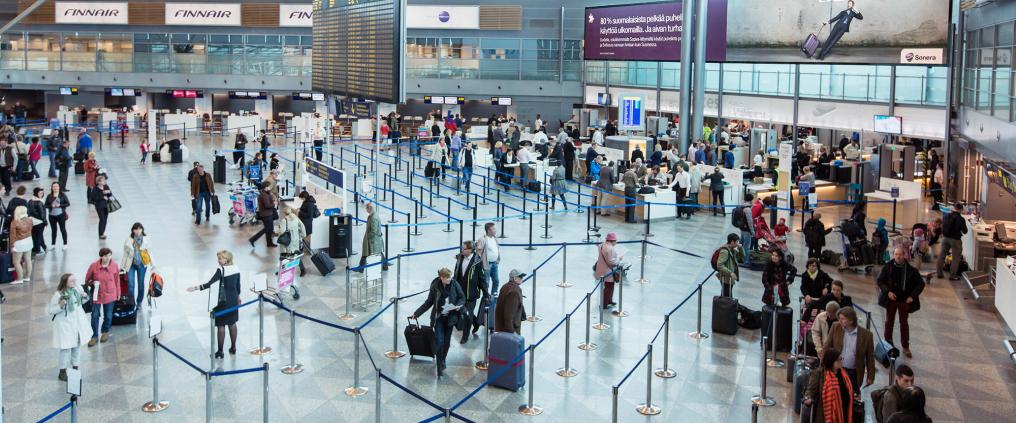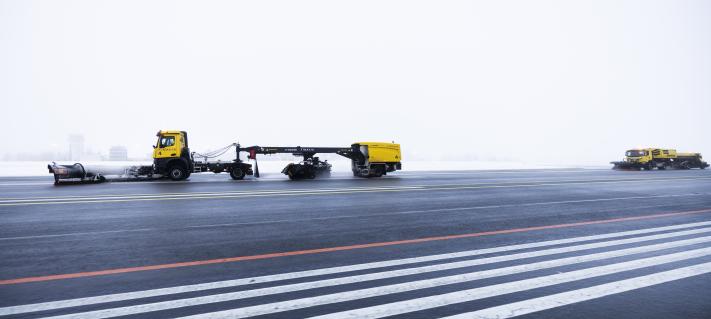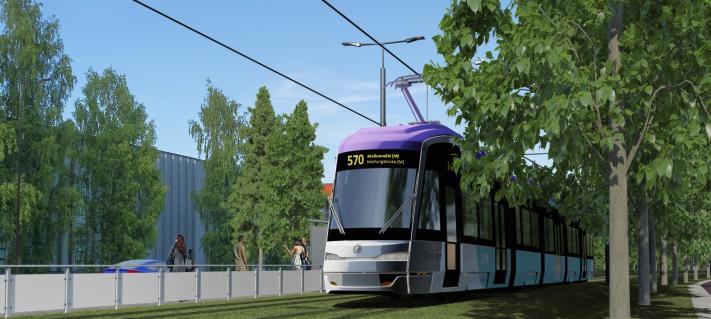Check-in, security check, border control and boarding the airplane. These are the four key touch points that a passenger must move smoothly through to ensure a pleasant airport experience – and have time for more than queuing.
– The airport, border control authorities and airlines have to work together to ensure that all these key processes have enough capacity so that passenger flows stay smooth, says Timo Koivisto from Finavia’s Digital Passenger Mobility Operations.
When an airport is growing as quickly as Helsinki Airport – which is expected to hit over 20 million passengers later this year – extra capacity needs to be added every year.
– We follow passenger flows constantly, especially during peak hours. Based on the results we plan the additional capacity for the upcoming seasons, Koivisto explains.
– This can mean either adding new lines for security check or new technology, or developing processes to be even more efficient. But in the end, everything comes down to successful daily operations.
With smart allocation of resources, Helsinki Airport has been able to keep, for instance, security check queues rather short: despite growing passenger numbers, queueing times of over 15 minutes are highly rare.
Self-service brings efficiency
Koivisto says that adding self-service options has increased the capacity of many of the airport’s key processes. For instance, Helsinki Airport’s border control points have included automated passport control machines – alongside regular customer service points – for a few years already.
– Especially in transfer travel, where large aircrafts can sometimes arrive very close to each other, border control needs to be able to react quickly. Automated lines can guarantee sufficient capacity in these situations, Koivisto says.
In the departure halls, check-in processes have become smoother thanks to self-service machines. Check-in kiosks are a great way to ease congestion and avoid long queues during peak hours.
In the security check, boarding pass scanners have cut security check times by three to five seconds per passenger.
Improved service through e-boarding
Finavia has also invested, together with airlines, into developing an electronic service for boarding the aircraft.
– By the end of this year, all Schengen area gates that have a passenger bridge will include an e-boarding option. Not only does it make boarding quicker but also helps airline personnel in serving customers with special needs, Koivisto kertoo.
Space design also affects passenger flows
Koivisto highlights that planning passenger flows is always done in cooperation with the different operators at the airport. Solutions must take into account different needs from airlines and ground handling companies, authorities and commercial operators.
Besides effective passenger processes, space design also helps guide passenger smoothly through the airport. Even minor details can make a big difference.
– For instance, designating waiting areas and separating them with rails or carpets from walkways, can improve people flow, Koivisto says.
Helsinki Airport’s development programme will also bring much-needed extra space to the airport, enabling large improvements to passenger flows.
– On the other hand, passenger volumes have crept up little by little. As we have continued to add more capacity and develop and fine tune our own processes, we have been able to meet the rising demand well, Koivisto says.
– Peak hour passenger numbers from previous years are the new every-day normal today.
Read why passenger volumes at Helsinki Airport are breaking records



